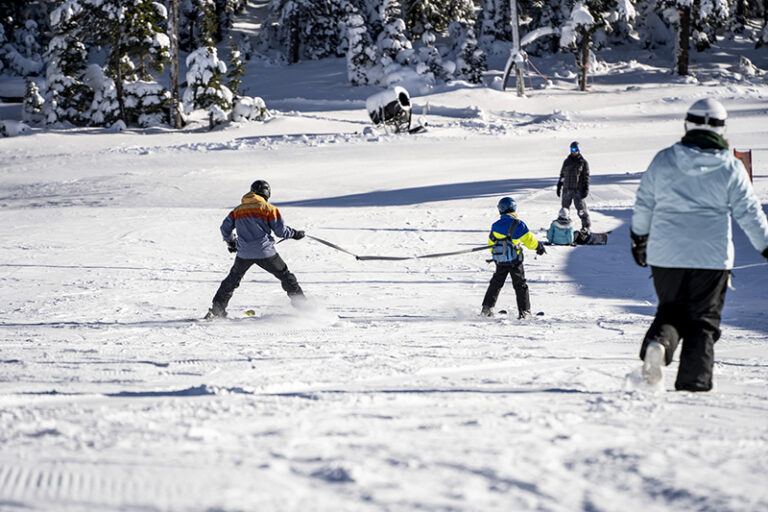You know how it is. Five, maybe seven, even two and a half miles into a backcountry campsite, perhaps somewhere only your GPS knows. Your feet hurt, and legs ache. After pitching your tent, it’s dinner time.
Those who know backpacking understand the key essentials for survival: food, water, shelter.
Besides scenery, good food is what makes a backcountry adventure more enjoyable – no matter what poor weather, heel blisters or undesirable wildlife encounters may occur. Moreover, meal planning and preparation is what most backpackers spend the most time on during the trip- planning process. And while out in the woods or subalpine terrain, food is what we often turn our thoughts to while hiking, filtering water, cursing the weather or contemplating the wilderness serenity. Well, at least this is true for those who aim to eat well on the trail.
For those who have so far subsisted on ramen, macaroni and cheese, summer sausage, bagels, peanut butter and god-knows-what-else, there is hope – a wide world of meals that are lightweight, healthy and delicious.
After all, you should enjoy what you’re eating while getting sufficient carbs, protein and nutrients to keep your body energized and strong throughout your recreational wilderness adventure.
PACKAGED DEHYDRATED MEALS IN A BAG
The dehydrated meal industry has flourished in the past ten years with some dominant competing brands, including Mountain House (MH), Backpacker’s Pantry, Richmoor Natural High and Organic Mary Jane’s Farm.
Those who have tried Mountain House might agree with me that this company provides the best tasting, pre-packaged meals-in-a-bag for the backcountry. Beef Stroganoff and Mexican-Style Chicken with Rice are two of my favorites.
No mess: simply pour boiling water into the bag, stir, seal and wait to eat. An easy, leave-no-trace, no clean-up meal. (Organic Mary Jane’s Farm meals do require “cooking” the meal in a pot rather than the packaging.) These are a great option for a short trip with minimal preparation.
Yet, pre-packaged meals can add up to an expensive menu – entrees range from $5.90-$13.50 for a two-serving package. Plus, they’re high in sodium. For example, MH’s Beef Stroganoff has 1,050 mg of sodium per serving for its 320 calories. Organic Mary Jane’s Farm Tex-Mex Casserole, however, has a mere 710 mg. REI’s “P.I.G” (product information guide) details everything in an easy-to-read chart, and even provides a blank four-day meal planner sheet on the back page.
Another disadvantage to these meals is that most of them (Mary Jane’s excluded) have the same texture and consistency – essentially, goop. Lasagna, teriyaki chicken, beef enchilada – all goop, albeit delicious, which you eat with a spoon.
FREEZER BAG COOKING
The solution for healthier, more diverse and less expensive meals? Freezer Bag Cooking™ (FBC) – freezerbagcooking.com. Founded by Sarah and Kirk Kirkconnell in Maple Valley, Wash., FBC recipes and cooking methods are designed for comfort level ultra-light (UL) backpacking trips, according to its website.
In addition to recipes and pictures to see how it’s done, their website is the virtual home of their bookstore (self-published cookbook) and small gear company that sells supplies related to UL backcountry cooking – including Sarah’s specialized homemade “FBC Fabric Cozies,” which come in an attractive array of colors.
My husband and I first tried some FBC last summer during our four-day backpacking trip in Glacier National Park. It took substantial time to find all the necessary ingredients for the recipes we needed. There is also a lengthy prep time to prepare three “freezer bag” meals per day, plus snacks, for a multi-day trip.
But, oh the food we enjoyed! The Tuna “Bruschetta”, Pizza In a Bag, Chicken Ranch Tater Trash-erole and BBQ Chicken Rice Wraps were our most favorite meals.
Boiling water added to a zip-locked bag of dehydrated ingredients (the plastic baggie doesn’t melt) still offers a no-mess process, but FBC recipes provide varied textures and often include pita bread or tortillas to complete the meal.
Some of the essential ingredients and supplies to create most Freezer Bag Cooking™ meals include: instant rice, dried veggie flakes and herbs, dried onion, instant mashed potatoes, couscous, sundried tomatoes (oil-free), shelf stable parmesan cheese, 5 oz. cans of chicken, 3 oz. albacore tuna pouches, and, of course, quart-sized zip-locked plastic baggies.
OTHER YUMMY IDEAS
Breakfast: Summer Sausage (slice and fry in a nonstick pan) and scrambled eggs using flavored Egg Beaters®, bagels (slice and toast in your pot), oatmeal, coffee – either French Press or espresso, with pre-ground coffee. The GSI Expresso Maker is awesome, and the company is based in Spokane Valley. Drink your java straight, add hot cocoa powder, or add cream (care of small, packaged creamer cups you brought along – or powdered creamer or powdered milk).
Lunch/Snacks: peanut butter and honey mixture (pre-made mixture at home, packed in a secure fitting container, such as something by Rubbermaid®); cream cheese-spice mixture (pre-made: garlic, onion, chili and cayenne powders to taste) spread on pita bread or bagels; cheddar or string cheese with crackers; dried fruit; GORP (“good old raisins and peanuts” or an enhanced combination of trail mix that can include chocolate chips, M&M’s® and other tasty ingredients).
For backpacking, think small packages – individually wrapped packages of cheddar and cream cheese; single serving packets of pepper, ketchup, soy sauce, mustard, jelly and whatever else you desire. Although it generates more waste, the ease and ability to keep food sanitary and fresh is worth it.
If you’re not backpacking very far and can accommodate the weight, your food choices can be more luxurious – like a frozen chicken breast that will be near thawed by cooking time. Still, it’s best to keep the bag of baby carrots or cantaloupe at home.













